Air Quality
New Study Finds Dangerous Levels of Toxic Air Pollution From Fracking
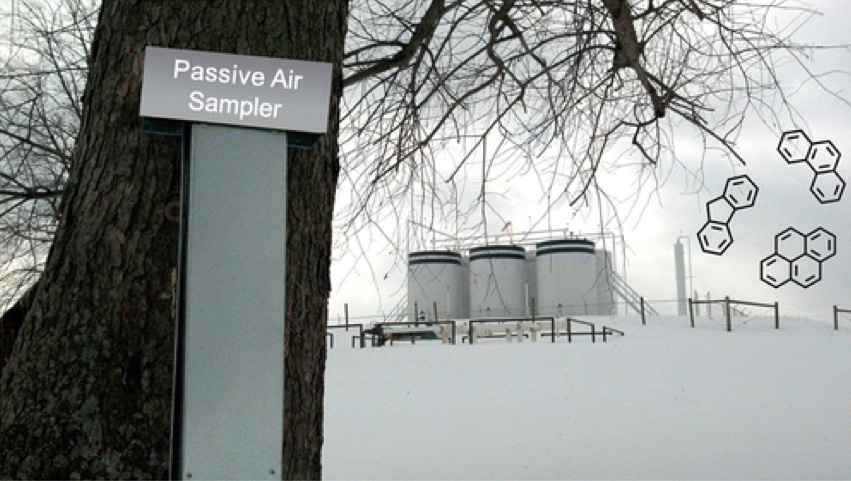 People living or working near active natural gas wells may be exposed to toxic air pollution at higher levels than the Environmental Protection Agency considers safe for lifetime exposure. That's the conclusion of a new study performed by scientists from Oregon State University and the University of Cincinnati, published in the March 26th edition of the journal Environmental Science and Technology.
People living or working near active natural gas wells may be exposed to toxic air pollution at higher levels than the Environmental Protection Agency considers safe for lifetime exposure. That's the conclusion of a new study performed by scientists from Oregon State University and the University of Cincinnati, published in the March 26th edition of the journal Environmental Science and Technology.
Sampling at various sites adjacent or downwind of fracking wells in Carroll County, Ohio over a three-week period last February revolved around 62 Polycyclic Aromatic Hydrocarbons (PAHs), a category of combustion-produced pollutants already linked too everything from childhood obesity to breast cancer, to lower IQ. Carroll County sits on top of the Utica formation, a gas rich shale deposit. The rural county is a hotspot of natural gas drilling and production, with more than one active well site per square mile.
“Air pollution from fracking operations may pose an under-recognized health hazard to people living near them,” said the study’s coauthor Kim Anderson, an environmental chemist with OSU’s College of Agricultural Sciences.
The study was initiated by citizens in the area who wanted to more about the health risks they were facing from fracking. They approached Anderson her peers and and the scientist designed the study to include citizen participation. They placed air samplers on the properties of 23 volunteers living or working at sites ranging from immediately next to a gas well to a little more than three miles away.
Anderson's samplers are aluminum T-shaped boxes containing specially treated polyethylene ribbons that absorb contaminants in a similar manner to biological cells. Volunteers were trained in proper handling of samplers and documenting of data.After the study period, the volunteers packaged the samplers in airtight bags, labeled them and mailed them back to Anderson’s lab at OSU.
Even the lowest levels – detected on sites more than a mile away from a well – were higher than previous researchers had found in downtown Chicago and near a Belgian oil refinery. They were about 10 times higher than in a rural Michigan area with no natural gas wells.
By looking at the ratios of individual PAHs detected by the samplers, Anderson and her team were able to discern whether they came directly from the earth – a “petrogenic” source – or from “pyrogenic” sources like the burning of fossil fuels. The proportion of petrogenic PAHs in the mix was highest nearer the wells and decreased with distance.
The team also accounted for the influences of wood smoke and vehicle exhaust, common sources of airborne pyrogenic PAHs. Wood smoke was consistent across the sampling area, supporting the conclusion that the gas wells were contributing to the higher PAH levels.
The researchers then used a standard calculation to determine the additional cancer risk posed by airborne contaminants over a range of scenarios. For the worst-case scenario (exposure 24 hours a day over 25 years), they found that a person anywhere in the study area would be exposed at a risk level exceeding the threshold of what the EPA deems acceptable.
The highest-risk areas were those nearest the wells, Anderson said. Areas more than a mile away posed about 30 percent less risk.
Estimated worst-case maximum residential exposure was 2.9 in 10 000, which is above the U.S. EPA’s acceptable risk level of one in a million. According to the study's abstract, "This work suggests that natural gas extraction may be contributing significantly to PAHs in air, at levels that are relevant to human health."
Ready to Fight Back and Win? Downwinders is about to launch its most ambitious campaign in years

Mercifully, the 2015 Texas Legislative Session is almost over. Since January we've seen cities stripped of their traditional zoning power over oil and gas facilities, citizens' ability to challenge new pollution permits further suppressed, and renewable energy sources singled-out for financial punishment.
But the circus leaves town on June 1, and shortly after that Downwinders at Risk will be gearing up for the largest clean air campaign we've taken on since our fight against hazardous waste burning in the Midlothian cement kilns.
It'll begin with the mid-summer release of the results of a years-in-the-making project that turns the tables on the recent trend to transfer all pollution decisions from local governments to Austin. For the first time, city and county officials in North Texas will have the power to do what, up until now, only state agencies could do.
We don't want to give away too much too soon, but this is by far the single most costly project we've ever sought funding for, and it will have an impact on every major industrial source of pollution affecting Dallas-Fort Worth air quality – the cement kilns, the oil and gas industry and the obsolete East and Central Texas coal plants. And It's being done in a way that makes its results unimpeachable by a hostile state government and industry.
As a kind of sneak peak, below is a small sample of what we're talking about. It's a map of our half of Texas with the DFW metropolitan area outlined in black near the top. It shows the reach and intensity of smog pollution from the five coal plants closest to us. Even though they're 90 to over 100 miles away, they're still able to raise smog levels in central DFW by 4 to 8 parts per billion or more – a huge amount that could make or break our compliance with the Clean Air Act.
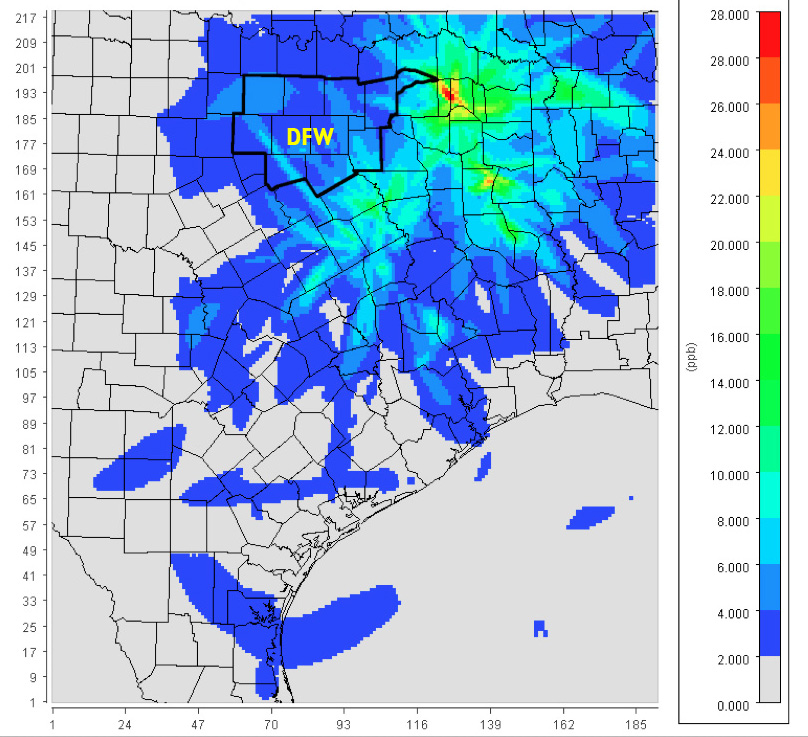 This is a map the Texas Commission on Environmental Quality has the ability to produce, but refuses to. Now, we have the same ability. And we can aim it at any large industrial source of pollution in the region. And we have.
This is a map the Texas Commission on Environmental Quality has the ability to produce, but refuses to. Now, we have the same ability. And we can aim it at any large industrial source of pollution in the region. And we have.
Moreover, the results of our study are being released in tandem with an associated project by Dr. Robert Haley and the University of Texas – Southwestern Medial Center. Together, they'll represent the opening salvos to a sustained, multi-organizational campaign to address DFW's chronic bad air problems.
Armed with this new evidence and having identified some chinks in the armor of the Status Quo, we see a chance to strike a powerful blow for cleaner air and citizen power. We see a chance to win a significant victory. We don't know about you, but after the last five months, we could sure use some victories.
That's not to say winning will come easy. It's still Texas. But we hope you'll agree that one of they keys to our long track record of success is picking the battles and the battlefields that give us better odds.
Every dollar you give goes to fight
for cleaner air right here in N. Texas
Happy 2015 Ozone Season!
 No sooner had the Lung Association's annual "State of the Air" report been released on Wednesday than DFW promptly lived down to its reputation for bad air with its first Ozone Action Days and "exceedences" of the national smog standard of 75 parts per billion on Thursday and Friday.
No sooner had the Lung Association's annual "State of the Air" report been released on Wednesday than DFW promptly lived down to its reputation for bad air with its first Ozone Action Days and "exceedences" of the national smog standard of 75 parts per billion on Thursday and Friday.
Thursday saw 8-hour averages of 79 ppb at the North Dallas monitor and 82 ppb at the Rockwall site. For three hours in the late afternoon that day the ozone levels in Rockwall were exceeding the old 1997 smog standard of 85 ppb and went as high as 97 ppb. In North Dallas, smog was also at 85 ppb or above for three hours and got as high as 90 ppb.
Friday' problems were more widespread but not as intense. Five different monitoring sites exceeded the current 75 ppb standard, and the pattern of exceedences were more traditional. That is, the highest-reading monitors on Friday were the ones that traditionally produce the highest numbers every year. Keller and Grapevine averaged 76 ppb, Denton and Eagle Mountain Lake average 77 ppb, and Parker County averaged 79, seeing a peak of 82 in early afternoon.
In all, as of Friday evening, seven out of the 20 DFW smog monitors had their first official excedence of the current 75 ppb standard. As veteran observers know, it takes four such exceedences to qualify as an official violation of the standard. That is, each monitoring site is allowed to exceed the standard three separate days before the fourth-highest day is counted as a violation. This methodology ends up masking the severity of a region's smog problem, but it's been used for over two decades now and so is the EPA's measuring stick of choice.
Since it's only May, there's lots of time for one or more sites to accumulate four or more days over 75 ppb. What will be interesting to see this year is how many, if any, end up with 4th highest readings above the 1997 85 ppb standard – a level of compliance we had not been able to meet until last year's cooler and wetter summer.
For those of you who want to keep score at home, here are the relevant, if not all together public-friendly links:
For tracking the four highest ozone levels recorded at all 20 DFW ozone monitors.
For tracking 8-hour average ozone levels at all 20 DFW monitors by day and month
For tracking ozone levels in real time during the day at all 20 DFW monitors (This site sets-up with a statewide graphic. Click any white square with a number in it in the DFW area and you'll get a closer view of the North Texas region and monitors. For tracking any monitor's ozone levels hour-by-hour for any day, use the same technique but then click on the monitor on the North Texas map you want to examine more closely and the specific data for that day at that monitor will come up. To change the day you want to look at hour-by-hour, change the month and/or day in the slots above the "parameters" chart.)
Hovering over all these numbers is one more – the prospect of a new national smog standard by the end of the year. This is the one that was at the center of the EPA's national hearing in Arlington this last January. Although EPA's own panel of scientists has recommended a level of 60-65 ppb, most pundits believe it will end up between 65 and 70 ppb. So when you see officials boasting about lower ozone levels in DFW, keep in mind that the medical consensus is that the current 75 ppb standard set by the Bush administration is still too high to protect public health.
What’s worse than DFW air being bad? The news coverage of it being bad.
 Another year, another "F" from the American Lung Association's "State of the Air" report. This week saw the release of the annual study, which ranks air quality across the US, and has given DFW a failing grade for its dirty air every year, beginning in 1999 when the first one was published.
Another year, another "F" from the American Lung Association's "State of the Air" report. This week saw the release of the annual study, which ranks air quality across the US, and has given DFW a failing grade for its dirty air every year, beginning in 1999 when the first one was published.
Since passage of the amendments to the Clean Air Act establishing national health-based standards for ozone, or smog, in 1991, North Texas has never had safe or legal air, and usually ends up in the list of ten worst bad air cities in the country. This year was no exception, when the Metromess came in at #7, relying on numbers from 2011 to 2013.
Yes the levels of smog have mercifully come down over the last 15 years. But so have the levels that are considered by public health experts to be "safe." And while other metropolitan areas of equal size have shown faster, deeper improvements in air quality, DFW has lagged behind.
But many of you already know that. What was most disappointing about the ALA report was not its conclusions concerning our air, but the coverage of those conclusions in the local media, which was almost invisible, exceeded in its inconspicuousness only by the lack of context in what little mention there was.
By our count only the Dallas Morning News and its television partner Channel 5 even had stories about the report. In the DMN, it was left up to Jack-of-all-trades reporter Robert Wilonsky to write the short blub (490 words, or less than the guest op-ed limit of 650 words imposed by the paper's editorial pages) in a blog post, while KXAS clocked in with a relatively long piece over just over 2 minutes that featured an interview with Downwinders at Risk board member Cherelle Blazer and her asthmatic son.
A decade ago, this report would have been a bigger story. Some of that missing coverage is due to bad air fatigue by local news editors – "This just in, DFW air still sucks, details at 10" – but a lot of it's due to the entire category of environmental beat reporters that no longer exists. Not that long ago, both papers had full-time environmental reporters, as did most of the network TV affiliates. Not now.
The Star-Telegram newsroom is shrinking faster than a Greenland glacier and keeps shedding reporters with an environmental portfolio at a rate of about one per year. At this point it's not even possible to name a newsroom employee to whom you could pitch an anti-pollution story. The Morning News has an environmental reporter in name, but Randy Lee Loftis has been away from the beat for years, instead doing mostly work as an editor and dropping in only for occasional pieces. Stories about earthquakes and fracking were recently covered by science reporter Anna Kuchment, while other pieces about fracking itself were written in the business section by James Osburn. Wilonsky's Wednesday's article about the ALA report was in the "Life and Arts" section of the DMN's website.
Don Wall used to be the Channel 8 environmental reporter. Channel 4 had one too. But now these stores are rotated out to those who may or may not have any background in environmental reporting at all.
That's bad news because the less familiar they are with the subject matter, the more likely a reporter is to fall for the smooth Party Line from government or industry, rather than having seen for themselves that the official explanation has big holes. Anyone who's in the news business knows that the best stories are broken and covered by those with the best sources and understanding of what they're talking about. You need to know the context, the series of dominos that's falling or will fall around this piece, as part of a longer, larger narrative. A beat reporter who's been covering the issue and knows all the players without a program.
In the case of air quality and the ALA report, there's simply no one around to remind the public that this report covers the exact years the last "clean air plan" submitted by the Texas Commission on Environmental Quality was supposed to give us historical low levels of smog – despite not requiring any new controls on any sources of air pollution. Instead, smog got worse, the first time a plan has actually produced higher levels of ozone at its conclusion than when it began.
And that's important in 2015 because the same state agency is once again submitting a clean air plan that does nothing but wait for the federal government to act. No new controls on the cement kilns, the coal plants , or the gas industry. As a result, EPA's own computer modeling shows DFW is predicted to be only one of four areas in the country still out of compliance with the current smog standard in 2018.
As Paul Harvey used to say, that's the rest of the story – the really important part. The part that keeps the annual "DFW has bad air" piece from being just another update from an asthmatic child about a problem that seemingly has no solution and no end. There wasn't one mention of the do-nothing TCEQ plan(s), or the important industrial sources of pollution that keep getting a pass in either the DMN or Channel 5 pieces. Instead, smog is treated apolitically, as if it was an inevitable force of nature.
In fact, there's a reason why we keep getting F's in these reports. There's a reason why DFW air got worse between 2011 and 2013. It's because the State of Texas, with co-facilitation from EPA, wasn't doing anything to actively promote cleaner air. And now it's doing the same thing again.
Smog doesn't happen just because we have really hot days. It happens because there's an unresponsive system in place. It happens because of the politics of smog. Politics that people can change. That's a story that an environmental beat reporter who had covered the last five years of local air quality planning could tell. But instead you have to read it in a small non-profit's blog.
“Normal Levels” of Air Pollution Increase Risk of Dementia
 Supporters who saw us out and about for Earth Day events could come by the table and pick up a new flyer of ours that cites at least four recent studies linking dirty air to Autism and other developmental disorders in children.
Supporters who saw us out and about for Earth Day events could come by the table and pick up a new flyer of ours that cites at least four recent studies linking dirty air to Autism and other developmental disorders in children.
Now comes a study that suggests the other end of the age spectrum is also adversely affected by the same phenomenon – that the brains of middle aged and older adults are subject to accelerated aging from exposure to "normal levels" of particulate matter (PM) air pollution in cities.
Writing in the May issue of "Stroke," researchers with the Cardiovascular Epidemiology Research Unit of Beth Israel Deaconess Medical Center in Boston described the results of a long term study of more than 943 men and women at least 60 years old and free of dementia and stroke histories. Those subjects living near "major roads" and exposed to "normal pollution levels" suffered cerebral shrinkage, ageing their brains by the equivalent of one year, and increasing their dementia risk. Small increases in particulate matter (PM) air pollution – an increase of only two microgram per cubic meter of air was sufficient to increase the risks.
"Exposure to elevated levels of PM2.5 was associated with smaller total cerebral brain volume, a marker of age-associated brain atrophy, and with higher odds of covert brain infarcts. These findings suggest that air pollution is associated with insidious effects on structural brain aging even in dementia- and stroke-free persons. "
Researchers said the exact causality was unclear, but that it might be that inflammation as a result of the deposit of fine particles in the lungs resulted in the increase in risk.
PM pollution is microscopic particles of soot – 1000th of the width of a human hair – emitted by combustion of all types: gasoline and diesel engines in vehicles, as well as boilers and furnaces in cement kilns, power plants and flares. PM 2. 5 refers to the size of the particle – at least 2.5 microns or smaller. The larger the road, the more traffic, the more internal combustion engines pass by releasing their PM pollution. Other studies – including the ones on our Autism flyers – have found a relationship between proximity to roads and brain disorders in children.
Professor of Neurology Dr Sudha Seshadri at Boston University School of Medicine said: "On average participants who lived in more polluted areas had the brain volume of someone a year older than participants who lived in less polluted areas." They also had a 46 per cent higher risk of silent strokes. "This is concerning since we know that silent strokes increase the risk of overt strokes and of developing dementia, walking problems and depression.”
Last year researchers suggested that commuters could cut their air pollution intake in half simply by using the side streets in major cities rather than main roads.
Dr Rossa Brugha, a paediatrician and pollution researcher at Queen Mary, University of London, said walkers and runners can make small adjustments to their route which could have major benefits on their health.
With the growing body of evidence that proximity to heavy traffic is detrimental to public health, the siting of new housing and schools should also be impacted by urban planners and developers, as well as give momentum to those who want to re-examine the need for large highway projects in densely-populated areas.
Not A Surprise: Pollution Reduction Helps Low Income Populations
 One of the most insincere and transparent memes polluters use these days is their sudden concern for the incomes fo poor folks if government forces them to reduce their pollution (we're looking at you Energy In Depth's Steve Everley). "If you make it harder for us to release our crap (into mostly low-income neighborhoods), energy costs and the prices of consumer goods will increase, taking money out of the pockets of people who need it most."
One of the most insincere and transparent memes polluters use these days is their sudden concern for the incomes fo poor folks if government forces them to reduce their pollution (we're looking at you Energy In Depth's Steve Everley). "If you make it harder for us to release our crap (into mostly low-income neighborhoods), energy costs and the prices of consumer goods will increase, taking money out of the pockets of people who need it most."
Ignoring the fact that none of these entities are working on behalf of the poor when they're not making this argument, a new study takes on that argument at face value, and finds, not surprisingly, that it's wrong.
Cutting greenhouse-gas pollution will mean cleaner air and cheaper electricity, according to a Natural Resources Defense Council report that offers a defense of the Obama Administration's Clean Power Plan, the goal of which is to reduce that pollution by 30% by 2030.
In this scenario, it's the owners of obsolete and dirty coal plants that are making the case that making them cut back on planet-wrecking pollution would cause their facilities to close down or add costly controls, resulting in the loss of jobs and higher electirc bills.
But according to the EPA, the initiative will actually cut electric bills by 8 percent and the NRDC study concludes it will create as many as 274,00 jobs in energy-efficiency projects, not to mention new renewable energy positions.
NRDC's numbers show that the country is at a tipping point now where the costs of efficiency and renewables are cheaper to tap into than traditional fossil fuel power sources. It notes the operator of the nation’s largest power grid, "PJM Interconnection" found that generating 30 percent of the electricity in its region from renewable energy sources could save consumers up to 30 percent on their bills.
That conclusion echoes the 2013 report by Daniel Cohan, released by the Dallas County Medical Society in its unsuccessful bid to petition the Texas Commission on Environmental Quality to close Luminant's three older East Texas coal plans. It found that when the costs of becoming a modern Clean Air Act-abiding facility was factored in, the per kilowatt rate of electricity from those dirty coal plants made renewables like wind and solar competitive, and efficiency cheaper outright.
Our energy menu is now much bigger than "nukes or coal." One of the bright spots of the early 21st Century is that we're living in an age when non-fossil fuel alternatives really are a viable market force, in part, because they can not only help reduce the pollution in our air, but also take less of a bite out of our monthly budgets. And for those among us who spend a larger percentage of their budget on basic needs like heating and cooling, this is good, green news.
Spanish Study: Link Between Cement Kilns and Cancer
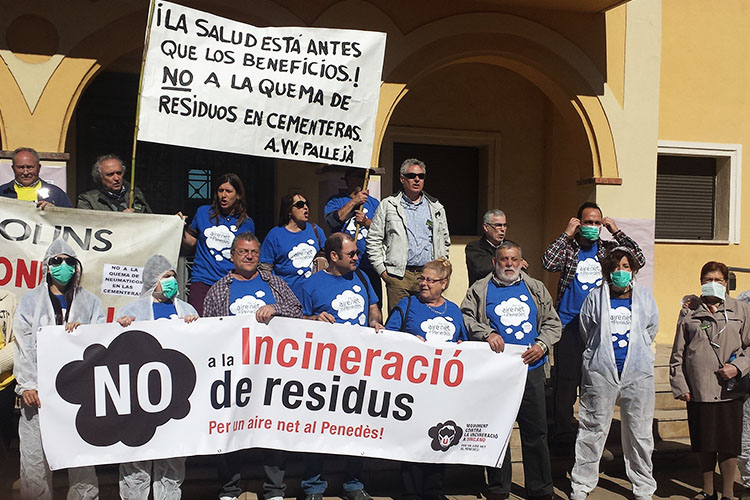 Although it was first published last July, news of a new Spanish epidemiological study of residents living in proximity to cement plants has just now reached us.
Although it was first published last July, news of a new Spanish epidemiological study of residents living in proximity to cement plants has just now reached us.
Done by the the same researchers responsible for a 2012 study that found statistically significant increases in all cancers around waste incineration and auto scrap metal operation, this more recent report focuses just on cement, lime and plaster plants.
According to the researchers, a statistically signifiant increase in all cancer mortality was detected in the vicinity of these installations as a whole, but principally, in the vicinity of cement installations. Specifically, tumors of the colon–rectum in both sexes and of the pleura peritoneum, gallbladder, bladder and stomach in men were noticably higher. In a summary of the results, the authors state they believe residents have "an excess risk of dying from cancer, especially in colon–rectum, in towns near these industries."
Because they take such a long time and so much effort, there's a dearth of epidemiological studies focused entirely on cancer risks among those living in proximity to cement plants, although a 2004 Italian study found a significantly greater risk of lung cancer among people living near a cement factory (whereas the results of another Italian study confirmed significant excesses for cancers like the nervous system, leukemia, mesothelioma and peritoneum in a region with the presence of various industries including cement factories.
In explaining the higher incidence of gut cancers among both men and women, the study hypothesizes about the possible ways local residents are exposed to carcinogens:
In our study, one aspect to be borne in mind is that colorectal
cancer is the only tumor with statistically significant excess risks
in men and women, which might be indicative of a pathway of
environmental exposure. In this case, two possible routes of exposure
to the pollution released by these installations are considered:
direct exposure to pollutants released to air; and indirect exposure,
both to pollutants and liquid effluents which are released to water
and can then pass into the soil and aquifers, and pollutants which
are released to air and then settle on plants. In such cases, the toxins
may pass into the trophic chain, affecting the population.Some authors have already shown associations between colorectal cancer and proximity to industrial pollution sources as metal industries (Garcia-Perez et al., 2010), mining (Fernandez-Navarro et al.,2012), food and beverage sector (Lopez-Abente et al., 2012) andchemical plants (Wilkinson et al., 1997). As regards cement plants,
a Brazilian study found a significant elevation on colorectal cancer
mortality in an industrialized area with cement industries came
into operation in the 1960s, among other facilities (Medrado-
Faria et al., 2001), and a Korean occupational study suggested a
potential association between exposure in the cement industry
and an increased risk of rectal cancer (Koh et al., 2013).
One thing a lot of these overseas studies and the Midlothian area have in common is a concentration of heavy industry. There's usually more than one facility and the region is considered an industrial corridor. That's certainly true of Midlothian, where besides hosting three large cement plants, the town is also home to a huge secondary steel mill, a power plant, and now an LNG plant. These industries combine to present a multitude of possible synergestic combinations of toxins to anyone living adjacent to, or downwind of them. "Toxic soup" is a term often used to describe the result.
This is also why the law lags behind the science in setting standards for cause and effect. When it's the cascade of chemicals from various facilities assaulting you, you're rarely going to be able to link a particular disease or illness with a specific plant. And yet the harm is happening all the same. This is why institutionalizing the "Precautionary Principle" into public policy is so important. It's much easier to prevent a chemical exposure than to track all of its ill effects after it's already doing damage.
Another Reason to Hate K-Cups: They Could End Up in Your Lungs
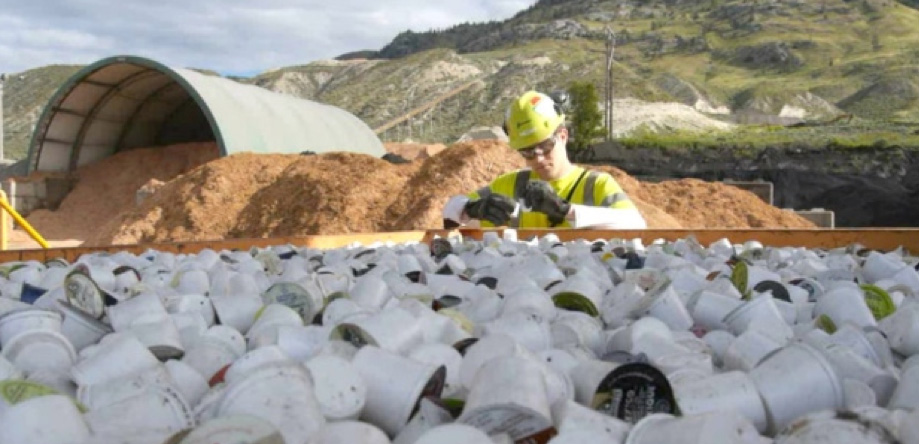 A new frontier in "alternative fuels" for cement kilns has opened up. A LaFarge cement plant in British Columbia has begun burning used plastic single-serving Keurig coffee cups, otherwise known as "K-Cups."
A new frontier in "alternative fuels" for cement kilns has opened up. A LaFarge cement plant in British Columbia has begun burning used plastic single-serving Keurig coffee cups, otherwise known as "K-Cups."
The cups aren't recyclable because they're a mixture of coffee grounds, paper filter, plastic cup and foil top that can't be efficiently separated.
The plant's manager says that the cups are "becoming more and more of a component of our waste steam." A chain delivers the spent cups in large bins. in 2014, over 80,000 pounds, or 1. 4 million, of them were burned at the plant.
Of course, LaFarge claims that the cups are "completely combusted." No mention of the increase in Dioxins/Furans, Polyaromatic Hydrocarbons, or other carcinogens created when the plastic is burned and complete combustion isn't do complete.
K-cups are just the latest piece of "unrecyclable plastic" to be added to the waste stream pouring into cement plants all over the planet. Although the use of hazardous waste as fuel has declined since the 1990's, the use of "industrial wastes" has soared as plants try to find free or subsidized sources of fuel to take the place of coal. Fuel costs are as much as a third of the operational expense of running a cement plant.
Although this new trend hasn't been embraced by Midlothian's three cement plants yet (as far as we know), the permits for TXI and Holcim allow the burning of plastics (along with a host of other industrial wastes), so it's conceivable a K-Cup bonfire could be coming to a kiln near you soon.
A report in February by the group As You Sow, specifically identified the food industry as a large generator of unrecyclable plastics. And one of the biggest culprits it spotlighted was the K-Cup, of which 9.8 billion were produced in 2014 alone. That's enough to circle the globe ten times with the small plastic shells. The Cup's waste is so ubiquitous that it's creator is now said to regret he ever invented it.
One media outfit began using the Cups but then "very quickly realized that this packaging was a problem." So Egg Studios produced a short "Cloverfield" parody where the plastic cups become the weapons of choice for an alien invasion. It's called "Kill the K-Cup.
Even a Single Day of Air Pollution Increases Stroke Risk
 When environmental health advocates speak about the dangers of dirty air, the effects are often categorized as long term and cumulative. But the more scientists delve into the subtleties of the human body and what outside influences can do it, the more they realize that even short term exposures can be harmful. That's been especially true lately when looking at pregnant moms and the exposure to fetuses in certain stages of development. Not it turns out to true when looking at the other end of the age spectrum.
When environmental health advocates speak about the dangers of dirty air, the effects are often categorized as long term and cumulative. But the more scientists delve into the subtleties of the human body and what outside influences can do it, the more they realize that even short term exposures can be harmful. That's been especially true lately when looking at pregnant moms and the exposure to fetuses in certain stages of development. Not it turns out to true when looking at the other end of the age spectrum.
A new examination of 103 studies involving 6.2 million stroke hospitalizations and deaths in 28 countries published online at the BMJ (British Medical Journal) found that almost every type of industrial air pollution contributed to a higher risk of stroke. And the higher level of exposure to the pollutant, the higher the risk of stroke.
Increases in the levels of Nitrogen Dioxide, Sulfur Dioxide, Carbon Monoxide and fine Particulate Matter were all associated with increases in strikes and hospitalizations. Not surprisingly, the strongest correlations were on the day of actual exposure, but the effects of PM, otherwise known as soot, were longer lasting. Missing from the list is ozone, or plain old smog, which studies have shown increases asthma and heart attacks on its own.
According to the report, strokes account for five million deaths worldwide every year and cause en even greater number of disabilities.
The lead author, Dr. Anoop Shah, from the University of Edinburgh, said that there was little an individual can do when there's a bad air day going on but stay indoors
“If you’re elderly, or have co-morbid conditions, you should stay inside,” he said. But policies leading to cleaner air would have the greatest impact, he said. “It’s a question of getting cities and countries to change.”
The Politics of Smog, in the US and Texas
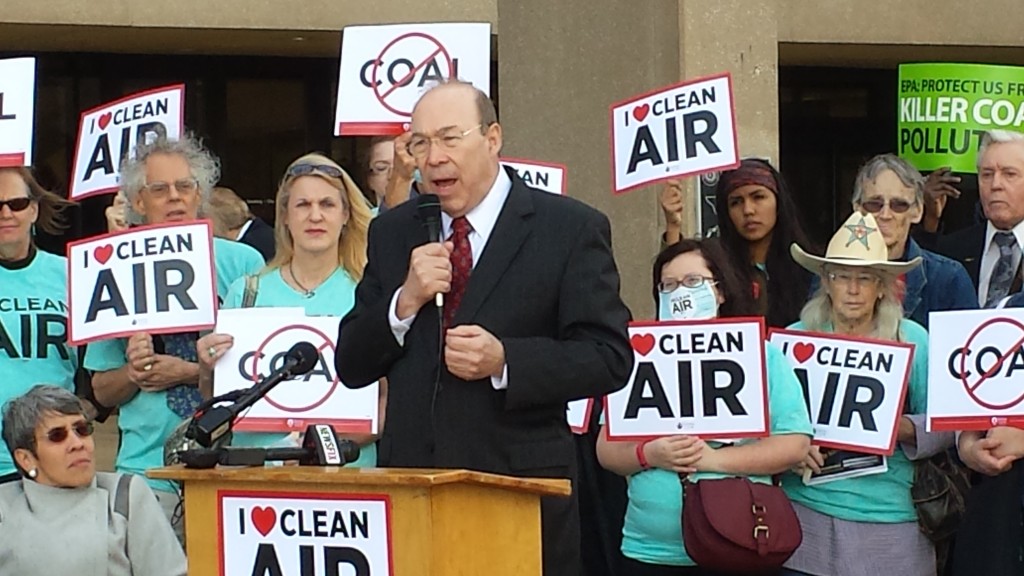 One of things about basing your health or exposure standards on science is that as research gets more sophisticated, the standards tend to get revised, usually downward. The more you know about how a substance affects the human body, the more subtle the health effects you discover. This has happned most spectacularly with substances like lead and benzene, but it's also happened routinely with smog, or as it's know in government regulations lingo, ozone.
One of things about basing your health or exposure standards on science is that as research gets more sophisticated, the standards tend to get revised, usually downward. The more you know about how a substance affects the human body, the more subtle the health effects you discover. This has happned most spectacularly with substances like lead and benzene, but it's also happened routinely with smog, or as it's know in government regulations lingo, ozone.
Unlike those other chemicals and substances however, the Clean AIr Act says standards for ozone exposure must be reviewed every five years to see if they're keeping up with the science. Standards must be protective fo public health. If new research discovers they're not, then they must get lowered. It's one of the most progressive and pro-active enforcement mechanisms that was included in the Act in a series of 1991 amendments.
As a result, in the past 20 years, the levels of ozone that were believed to be "safe" have come down dramatically as the science has gotten better. In the mid-1990's, an area wasn't out of violation unless it had over 125 parts per billion (ppb) of ozone as a one hour average. Dallas-Fort Worth more than matched that level, sometimes seeing one-hour readings as high as 135 ppb an hour. North Texas was out of compliance with the standard the moment it was passed.
As more research was published, scientists saw health effects at lower levels of smog exposure and so the standard was changed, as well as how it got measured. in 1998, the one-hour standard was tossed out and an eight-hour average began being used to reflect more realistic exposure patterns. And instead of 125 ppb, the number came down to 85 ppb.
Since 2006, the EPA panel of independent scientists in charge of those five year reviews mandated by the Clean Air Act have been concluding that the standard needed to come down to an eight-hour average of 60 to 70 ppb. But politics has interfered twice in trying to reach that goal. During the last Bush Administration it was brought down to only 75 ppb, where it stands now, and immediately before the 2012 elections, the Obama administration delayed another review that might have brought a lower number.
Now the process is cycling back and once again the EPA's own panel of researchers has recommended an ozone standard of 60 to 70 ppb. The EPA is said its looking at a range fo 65 to 70 ppb. Because the regulations haven't caught up with the science yet, it means, according to a new series of articles published by the Center for Public Integrity that,
"… people in a wide swath of the country breathe air that doesn’t violate any rules — and thus doesn’t trigger any warnings — and yet, according to research, is unhealthy."
There's no better example than DFW to demonstrate this behind-the-curve approach. Even while the state is in the final stages of submitting a new clean air plan for the region aimed at reaching the Bush Administration-era 75 ppb standard (by doing nothing but waiting for cleaner federal gasoline mandates to kick-in) the EPA acknowledges that number is obsolete and should come down to protect human health. Yet the state isn't penalized for not aiming lower, and isn't rewarded for reaching a lower number sooner than the deadline of 2018. The two tracks of regulation never intertwine, as if they were regulating two different kind of air pollution. In effect, government is blessing another half decade of unhealthy air in DFW.
Despite this lenient strategy it will come as no surprise that the State of Texas is fighting the current proposed revision downward in the ozone standard. It's at least consistent. Texas has always fought the lowering of the smog standard. Had it been up to Austin, we'd be living with the 125 ppb levels of 20 years ago – the smog equivalent of smoking two packs a day. As part of its look at the politics of ozone, the Center for Public Integrity's journalists spotlight the the Texas Commission on Environmental Quality's efforts to use industry researchers to make its case the standard is just fine where it is. One of the few pieces of good news is the involvement of local physicians with the Dallas County Medical Society stepping up and taking on Austin over its stance. Dr. Robert Haley of UT-Southwestern has become a well-known opponent of the TCEQ in his and the Medical Society's battle over the East Texas coal plants.
As the Center's articles indicate, court battles are an inherent part of the fight for better standards. Often environmental groups have had to sue the EPA to get the agency to implement the standards recommended by its own panel of scientists. Often, the EPA like it that way, because then it can say it was forced to lower standard by the courts instead of on its own. In Texas, with the submission of a state plan for DFW smog that many feel doesn't meet the Clean Air Act requirements for new controls, a court challenge could be facing the the EPA for the first time in a long time if it approves Austin's lax approach to providing safe and legal air to over six million residents.
The Center's articles are required reading for anyone trying to understand how the machinery of government works both to advance and retard the protection fo public health from a very basic threat. For DFW citizens, they could be a primer for an upcoming fight.
